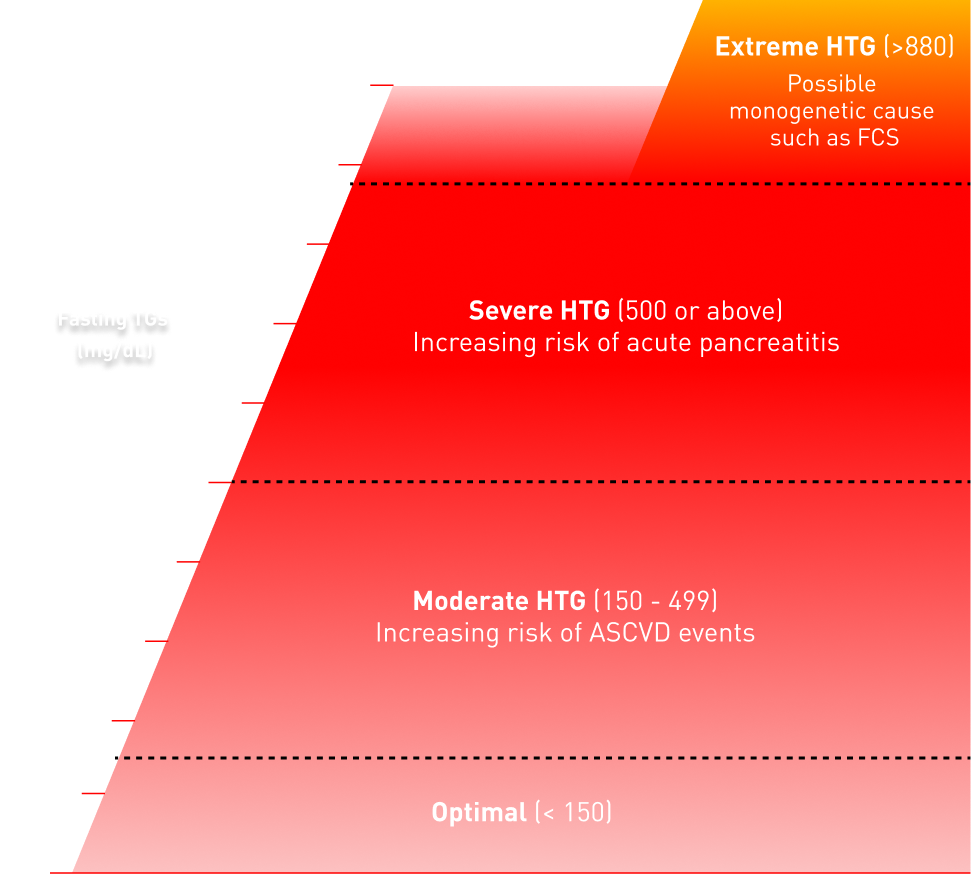Fasting triglycerides ≥500 mg/dL? That’s severe hypertriglyceridemia (sHTG).
When triglycerides (TGs) rise above optimal levels, the risks rise, too.23, 31
sHTG has many causes, and a combination of factors can lead to it. One thing remains the same: the risks caused by sHTG. From acute pancreatitis (AP) to atherosclerotic cardiovascular disease (ASCVD), the potential impact of severe hypertriglyceridemia (sHTG) is clinically important.3,1,10

sHTG strongly increases the risk of acute pancreatitis, especially when fasting TG levels exceed 1000 mg/dL. Fasting TG levels consistently above 880 mg/dL may indicate a monogenetic cause of sHTG, such as familial chylomicronemia syndrome (FCS).14 According to current guidelines, it is reasonable to reduce TGs whenever levels exceed 500 mg/dL to reduce the risk of acute pancreatitis.23,36,37


